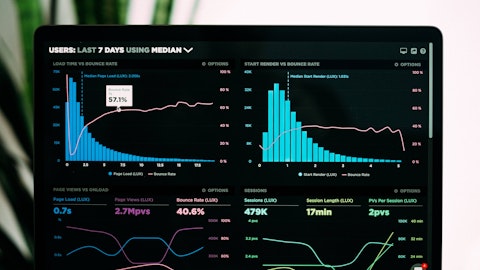Kenneth Tanji: Yes, it’s Ken. So the reinsurance of our variable annuity block closed in April. And so we had the benefit of that effective April 1, and it is one of the considerations we made as we looked at our RBC and our dividend capacity and factored into the dividends that we made in the third quarter, which was $1 billion from PICA. So we did get the benefit. It’s one of the things we thought about when we looked at the overall level of our RBC and then decided to make a dividend to PICA of $1 billion in the third quarter.
Suneet Kamath: Sorry, dividend out of PICA.
Kenneth Tanji: Yes, I’m sorry, yes.
Suneet Kamath: So just a quick follow-up there. I was just trying to track the holdco cash because it looked like it went down a little bit sequentially. Can you just kind of give us some of the bigger moving pieces there?
Kenneth Tanji: Sure. Yes. The bigger moving pieces, like I just mentioned, was the $1 billion that the holding company received from PICA as a dividend. And then we also made a $200 million investment in Prismic and then the other would be ordinary course, interest expense and shareholder distributions. And those are the main components that led to a very small change in our HLA.
Operator: Your next question is coming from Michael Ward from Citi.
Michael Ward: Another one on Prismic. But for the third-party component and the mechanics, if PGIM could get the AUM of new blocks being reinsured, wouldn’t the general account of the external blocks go on your balance sheet? Because I wouldn’t have thought that you’re targeting exposure to third-party capital intensive business.
Robert Falzon: Mike, it’s Rob. So yes, PGIM will have an appetite for doing both flow and balance sheet from Prudential as well as third parties. We will look to put — and yes, we will get the asset management on those blocks as they’re brought into Prismic. So that’s part of the arrangement that we have with Prismic. And then separately, we’ll make a decision as to how much we invest in Prismic on a go-forward basis. . As of now, our ownership in Prismic is at a 20% level. It’s not a contractual application for us to stay at that level. But having said that, we think that the returns that we get for a capital that could be deployed through Prismic when you think about the returns on the underlying blocks enhanced by the fees that we get from from our asset management business could be quite attractive on a risk-reward basis.
And so we would have some appetite for continuing to invest in those sorts of business when they significantly enhance the fee components that we get out of that business, which on an overall basis with a reduced risk profile of the earnings stream on a go forward.
Michael Ward: Okay. That’s helpful. And then maybe one thing we didn’t touch on CRE, commercial real estate. Any developments for you guys in the office area?
Robert Falzon: No, I would say that — it’s Rob again. Sorry, Mike, that nothing material to update you on from last quarter. We have a very high-quality overall real estate portfolio, including the office components to that or component of that. And we continue to see resiliency within that portfolio, as you would expect, given the experience that we have there, the dedicated team that we have from an underwriting standpoint and the quality of the overall portfolio. So while on the — from a valuation standpoint, but updating our valuations and the valuations of the collateral supporting office loans continues to come down, but our LTV still remain quite low on a relative basis, and we feel very comfortable with the overall portfolio exposure there.
Operator: Our next question is a follow-up from Wes Carmichael from Wells Fargo.
Wesley Carmichael: Just had a couple of earnings ones should be quick. But on the baseline for Q4, the $2.75 that includes normal variable investment income. So I was just hoping if you could help us with your outlook in the near term. It’s a pretty modest headwind in the third quarter, but just wondering if you expect that to be a bit challenged going forward.



